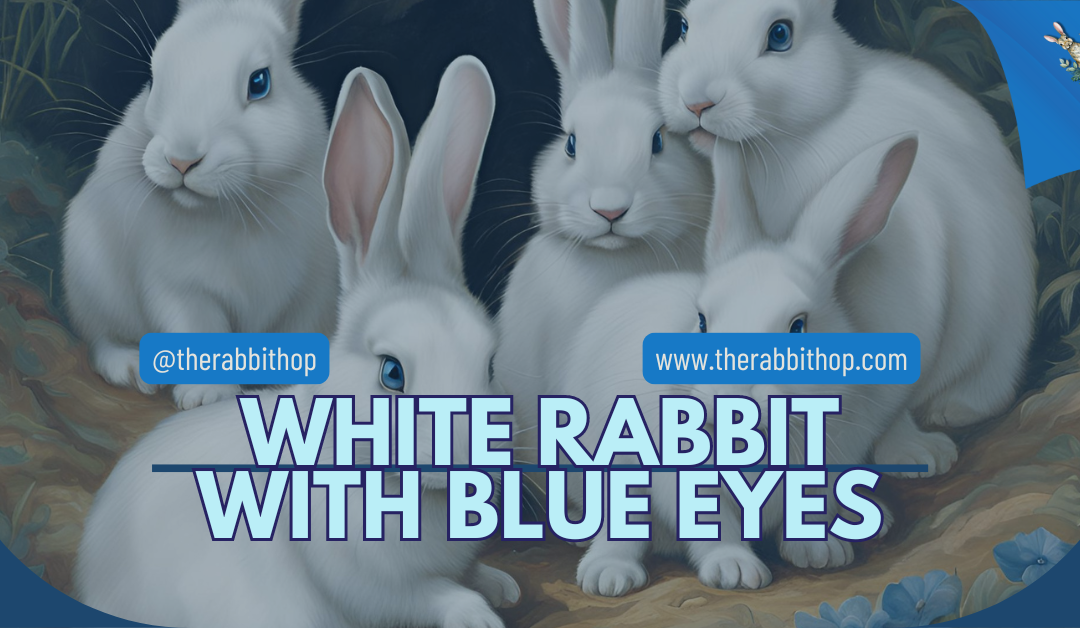Imagine a white rabbit with blue eyes, a creature that seems to have hopped straight out of a fairytale. This striking combination of fur and eye color isn’t just a visual marvel; it’s a glimpse into a world of unique genetic traits and rare beauty. These white rabbits with blue eyes captivate us with their ethereal charm and enigmatic allure, drawing us into a story of rare genetic combinations and their intriguing origins.
In this article, we’ll delve into the fascinating world of these magical rabbits, exploring the genetics behind their enchanting appearance and the special care they require. We’ll uncover why they capture our imagination and what differentiates them from other rabbits. Join us as we unravel the mystery and allure of these extraordinary creatures, revealing the secrets behind their spellbinding presence.
White Rabbit With Blue Eyes: An Adorable Pet
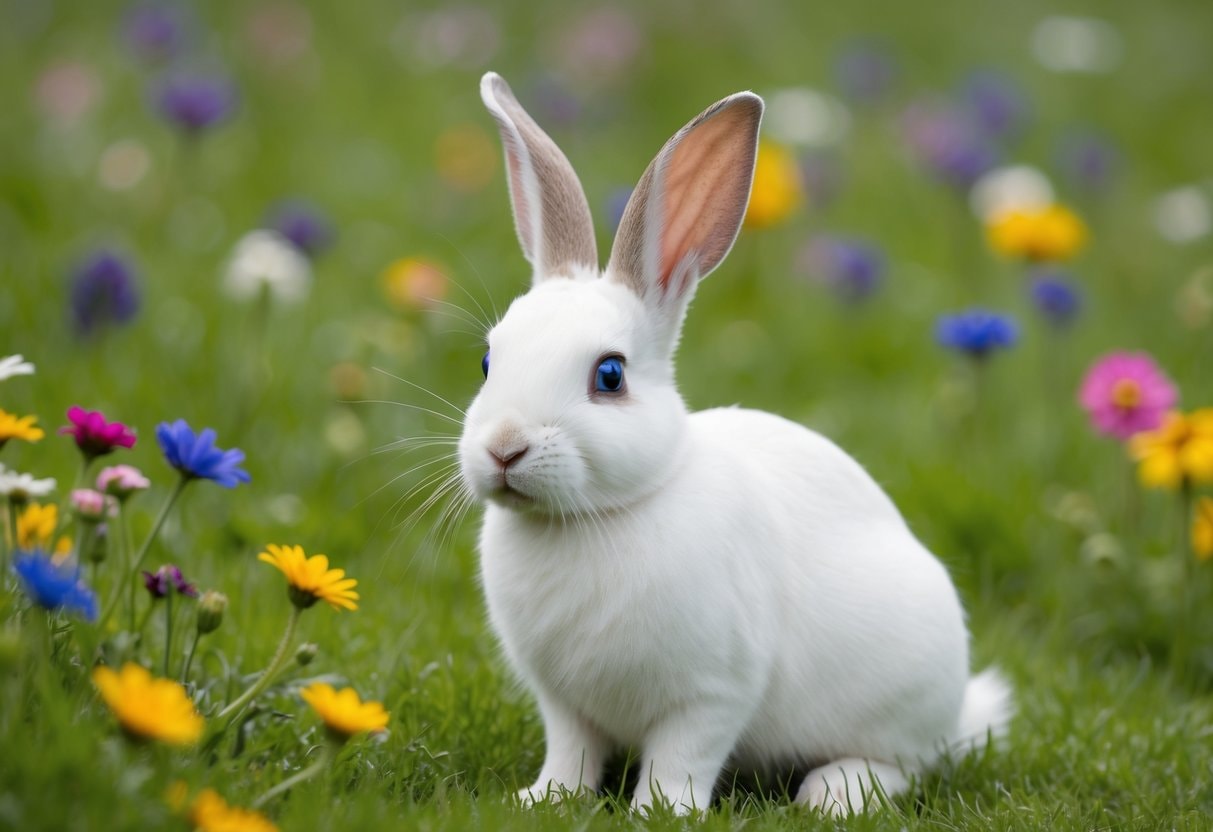
White rabbits with blue eyes are a stunning sight. These unique bunnies catch the eye with their snowy coats and piercing azure gaze. White rabbits with blue eyes are uncommon and prized by many rabbit enthusiasts. The blue eye color in rabbits is relatively scarce, resulting from a specific genetic combination. Not all white rabbits have blue eyes – many have the more typical red eyes in albino animals.
If you want to add a white rabbit with blue eyes to your family, you’ll need to research. Breeds like the White Vienna Rabbit are known for this color combination. These bunnies are often gentle and make great pets. Remember that all rabbits need proper care, regardless of their eye color or coat.
Key Takeaways
- White rabbits with blue eyes are rare due to specific genetics.
- Some breeds, like the White Vienna, are known for this coloration.
- Proper care is essential for all rabbits, regardless of appearance.
Overview of White Rabbits
White rabbits are popular pets known for their striking appearance. They come in various breeds and sizes, each with unique traits. Let’s explore their physical features and where they’re commonly found.

Physical Characteristics
White rabbits have soft, fluffy fur that’s completely white. Their eyes can be different colors, but blue eyes in white rabbits are quite rare. Most white rabbits have pink or red eyes due to a lack of pigment. Their size varies greatly depending on the breed. Some white rabbits are small and compact, while others are large and hefty.
For example, the Giant Angora can weigh up to 10 pounds! White rabbits have long ears that help them hear well. Their powerful hind legs allow them to hop and jump with ease. They also have sharp front teeth that never stop growing.
Habitat and Distribution
White rabbits can be found all over the world. In the wild, they prefer grasslands, forests, and meadows. But many white rabbits are domesticated and live as pets in homes. You can find white rabbits in pet stores, animal shelters, and from breeders. They’re popular in North America, Europe, and parts of Asia.
White rabbits need a spacious enclosure as pets with room to hop and play. They enjoy having hiding spots and toys to keep them entertained. White rabbits can live indoors or outdoors but need protection from extreme weather and predators.
Significance of Blue Eyes in Rabbits
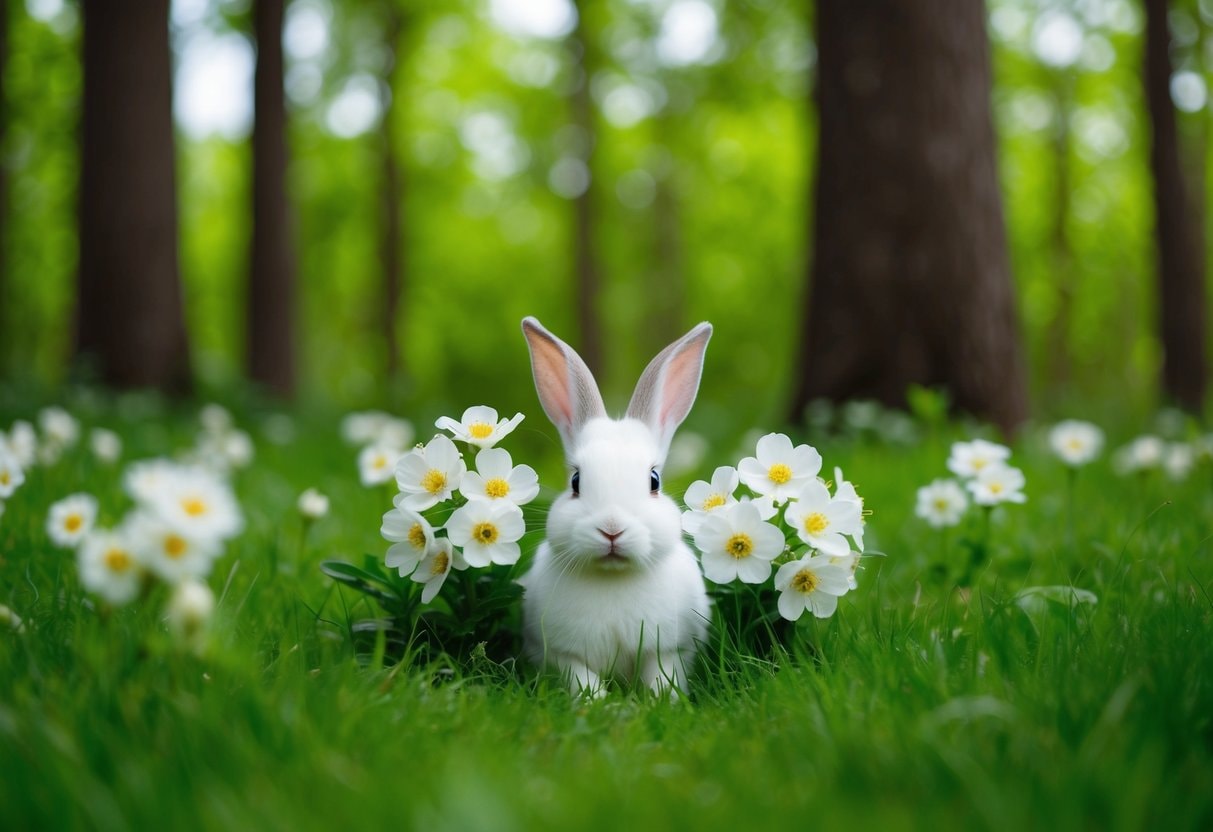
Blue eyes in rabbits are unique and eye-catching, particularly when you encounter a white rabbit with blue eyes. These stunning features come from rare genes, making the white rabbit with blue eyes a true marvel. Let’s examine why blue eyes matter in rabbits and explore the genetic factors contributing to this captivating trait.
Genetics Behind Eye Color
Blue eyes in rabbits come from a particular gene called the Vienna gene. When a rabbit has two copies of this gene, it gets blue eyes and white fur. This is called Blue Eyed White (BEW). The Vienna gene can hide other colors. For example, a black rabbit with two Vienna genes will look white with blue eyes.
If a rabbit has only one Vienna gene, it might have blue eyes but keep its original fur color. The rabbit’s eye color isn’t blue. It’s a mix of light and dark brown. When these color bits are tiny, they make the eyes look blue.
Rareness and Uniqueness
Blue eyes are scarce in rabbits. To get a blue-eyed baby, you need two parent rabbits with the right genes. This makes blue-eyed rabbits special and sought after. Most rabbits have brown eyes. Brown is the most common color because it’s a strong gene.
Blue eyes stand out and make a rabbit look unique. Rabbits see colors differently than we do. They can only see blue and green, not red. This means they can’t tell their eye color is special. But to us, blue-eyed rabbits look stunning and rare.
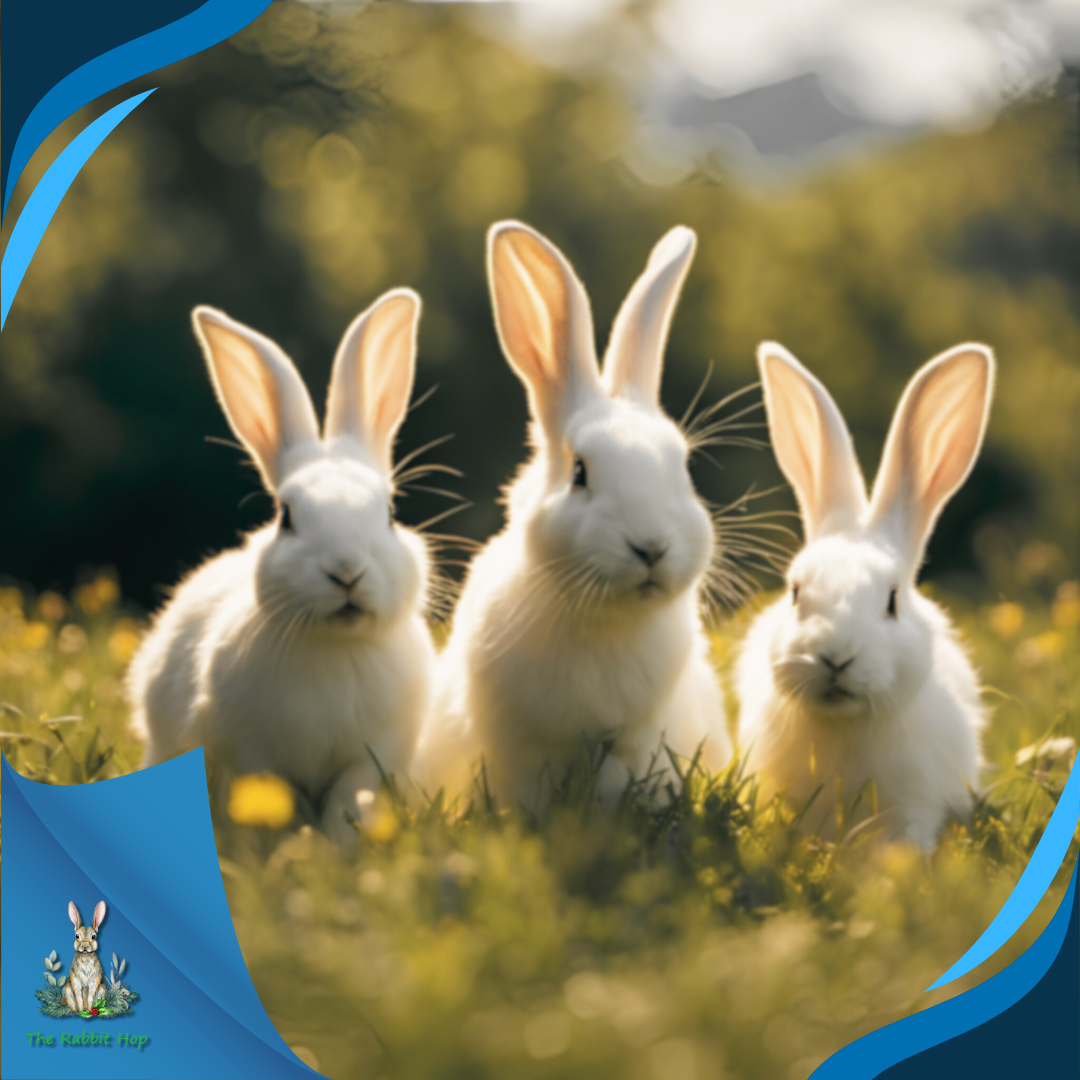
Did you Know?
Blue-eyed white rabbits are rare. The Vienna gene can create this eye color in some breeds. You might find blue eyes in Netherland Dwarfs, Mini Rexes, or Lionheads with the Vienna gene.
Here’s a cute video of a white rabbit with blue eyes.
By: Rabbitat
Caring for a White Rabbit With Blue Eyes
White rabbits with blue eyes need special care. They have unique dietary, grooming, and health needs that differ from other rabbits.
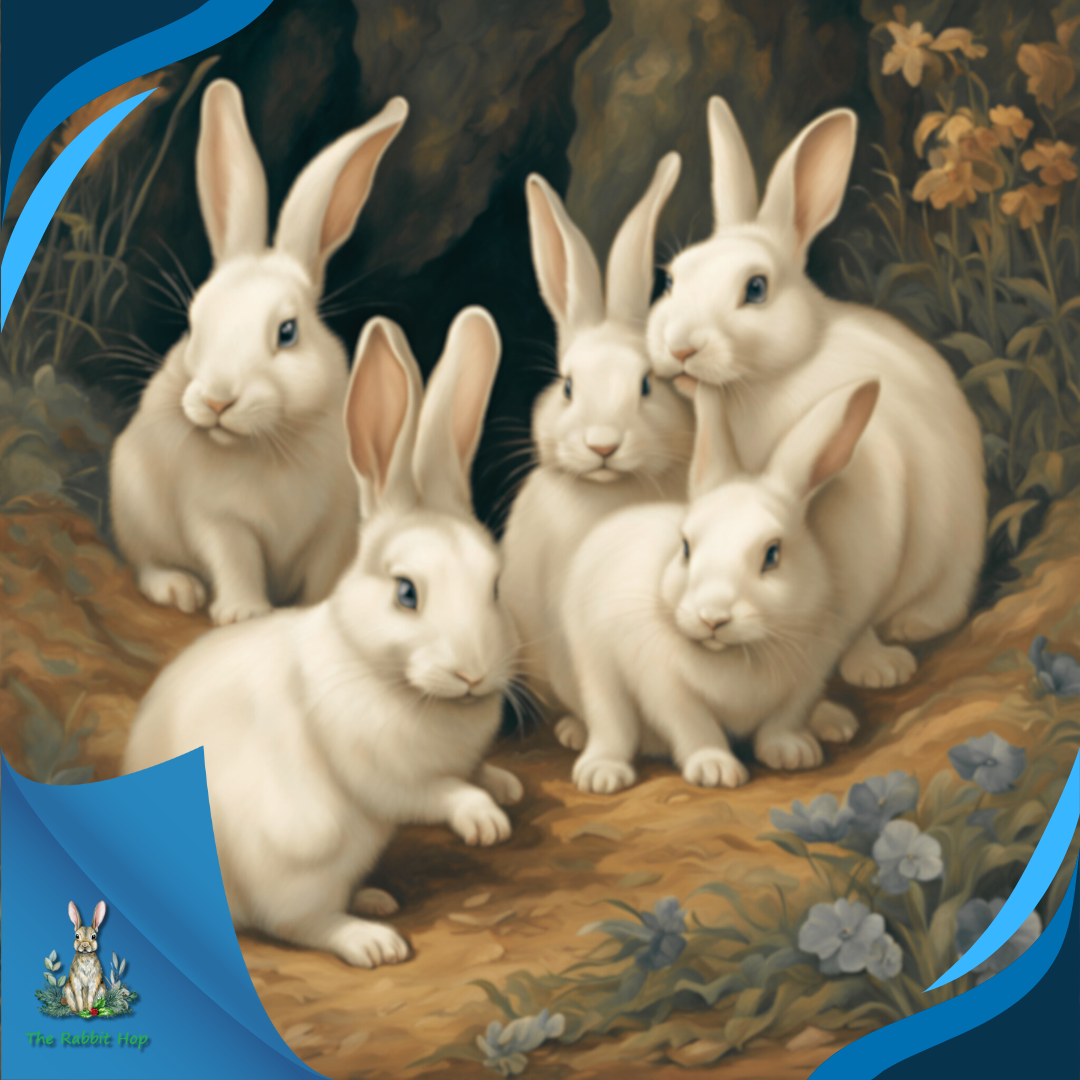
Dietary Requirements
Your blue-eyed white rabbit needs a balanced diet. Give them plenty of hay, making up about 70% of their food. Offer fresh grass hay like timothy or orchard grass daily. Add some leafy greens, too. Romaine lettuce, cilantro, and parsley are good choices.
Give your bunny a small amount of pellets made for rabbits. Be careful with treats. Carrots and fruits are high in sugar, so only give small bits as special snacks. Always have fresh, clean water available for your furry friend.
Grooming and Hygiene
White rabbits need regular grooming. Brush your bunny’s fur at least once a week to remove loose hair and prevent matting. During shedding seasons, you may need to brush more often. Trim your rabbit’s nails every 4-6 weeks. If you’re uncomfortable doing this, ask a vet to show you how or do it for you.
Clean your bunny’s ears gently with a damp cloth. Don’t use cotton swabs, as they can hurt your pet’s ears. Check your rabbit’s teeth weekly. They should be even and not overgrown. If you notice any issues, talk to your vet right away.
Health Concerns
Blue-eyed white rabbits can have special health needs. They may be more prone to deafness and eye problems due to their genetics. Look for signs of ear infections, like head tilting or loss of balance. These bunnies can also sunburn easily, so limit their time in direct sunlight.
Watch for changes in eating habits or poop. These can be early signs of health issues. Take your rabbit to the vet for check-ups at least once a year. Albino rabbits might have weaker eyesight. Make sure their living space is safe and easy to navigate. Avoid sudden changes to their environment that might stress them out.
Here’s a video on how to care for your pet rabbit.
By: Pets Life
Breeding White Rabbits With Blue Eyes
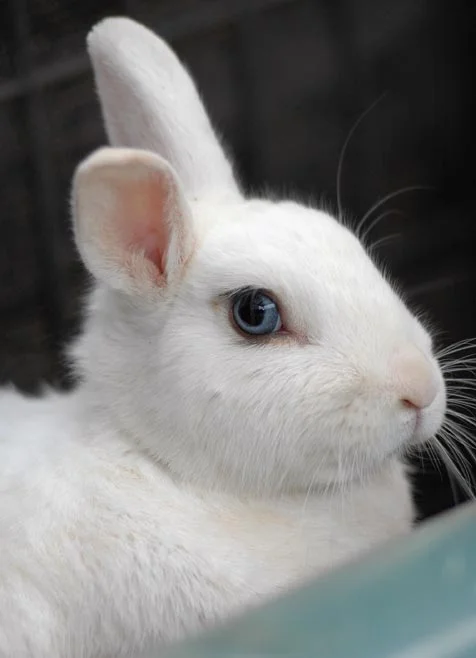
Breeding white rabbits with blue eyes requires careful genetic planning. The Vienna gene plays a key role in producing these unique bunnies.
Breeding Tips
To breed white rabbits with blue eyes, you need two parents carrying the Vienna gene. This gene is recessive, so both parents must have it for the offspring to be blue-eyed white (BEW). Look for rabbits with the “vv” genotype. These bunnies will have two copies of the recessive Vienna gene.
When breeding, pair two BEW rabbits together. This ensures all offspring will be white with blue eyes. You can also breed a BEW rabbit with a Vienna carrier. This pairing gives you a 50% chance of BEW babies. Keep detailed records of your rabbits’ genetics. This helps you plan future breedings and avoid unwanted traits.
Common Challenges
Breeding BEW rabbits can be tricky. One challenge is identifying Vienna carriers. These rabbits have one gene copy but don’t show it visually. Health issues can arise in BEW rabbits. They may be more prone to deafness and other genetic problems.
Mismarked rabbits are another hurdle. These bunnies have the Vienna gene but show patches of color instead of being pure white. Be patient with your breeding program. It can take time to produce the perfect BEW rabbit. Watch for eye problems in your BEW bunnies. Their blue eyes can be more sensitive to light and prone to tearing.
Cultural Representations
White rabbits with blue eyes appear in stories and media across cultures. They often stand for purity, magic, and wonder. These unique creatures capture people’s imaginations in various ways.
Literature and Folklore
Have you ever encountered a white rabbit with blue eyes in a story? These special rabbits pop up in many tales. In “Alice’s Adventures in Wonderland,” the White Rabbit leads Alice into a magical world. This famous rabbit has sparked many people’s interest in white rabbits as magical guides.
In some folk tales, white rabbits with blue eyes are seen as lucky. People think seeing one might bring good fortune. In other stories, these rabbits are linked to the moon. They’re often part of myths about the moon’s patterns and changes.
Modern Media
You’ve likely seen white rabbits with blue eyes in movies, TV shows, or video games. They’re often used to show something out of the ordinary is about to happen. In the movie “The Matrix,” the white rabbit leads the main character to a new reality.
In cartoons, these special rabbits might have magical powers. They could be wise characters who help others. Some video games use white rabbits as symbols of purity or as secret-level guides. Art often shows white rabbits with blue eyes, too. Painters and photographers like to use them to create dream-like scenes. These images can make you feel curious or peaceful.
Conservation Status

White rabbits with blue eyes are not endangered. They are bred as pets and for shows. You can find them in many places around the world. Some blue-eyed white rabbits come from special breeds. The Blanc de Hotot is one example. It has white fur with black circles around its eyes.
Breeders work hard to keep these rabbits healthy. They try to avoid health problems that can come with breeding for certain looks. You might see these rabbits at pet stores or rabbit shows. They’re popular because of their pretty blue eyes and soft white fur.
Remember, all rabbits need good care. If you want a blue-eyed white rabbit, make sure you can give it a good home. They need the same care as other rabbits. Rabbit clubs and breeders help keep track of different rabbit types. This helps make sure no rabbit breeds disappear.
Finding White Rabbits With Blue Eyes
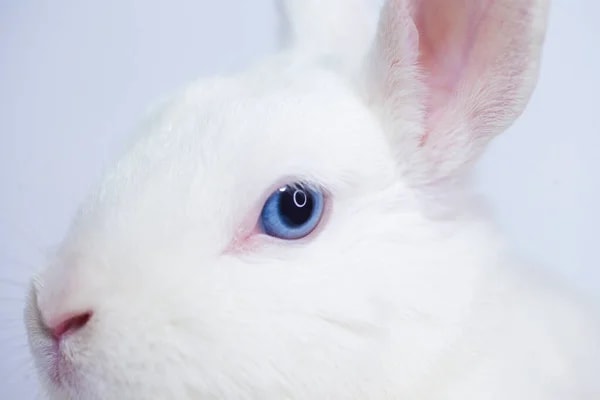
White rabbits with blue eyes are rare and sought-after. You’ll need to know where to look and what to consider when searching for these unique bunnies.
Breeders And Adoption
To find white rabbits with blue eyes, start by looking for specialized breeders. These breeders focus on producing rabbits with the Vienna gene, which causes blue eyes in white rabbits. Check online rabbit breeder directories and forums for recommendations. You can also attend rabbit shows to meet breeders in person.
Don’t forget to check rescue organizations and adoption centers. While less common, you might find a blue-eyed white rabbit needing a home. When contacting breeders or shelters, ask about:
- The rabbit’s age and health history.
- Temperament and personality.
- Care requirements.
- Adoption fees or purchase price.
Certification And Credibility
When looking for a white rabbit with blue eyes, it’s essential to verify the breeder’s or adoption center’s credibility. Ask if the breeder is registered with a recognized rabbit association, such as the American Rabbit Breeders Association (ARBA). These organizations often have standards for breeding practices.
Request to see health certificates and genetic testing results. This can help ensure your rabbit is healthy and carries the blue-eye gene. Look for breeders who:
- Provide a health guarantee.
- Offer post-adoption support.
- Have positive reviews from previous buyers.
Don’t hesitate to ask for references from other rabbit owners. A reputable breeder will be happy to provide them.
The Enchanting Allure of White Rabbits with Blue Eyes
White rabbits with blue eyes are a rare and enchanting spectacle that captures the imagination of many. Their striking appearance, marked by a snowy white coat and mesmerizing blue eyes, results from unique genetic traits that make them stand out among the rabbit population. These special rabbits, often associated with magic and wonder, hold a special place in both our hearts and cultural representations.
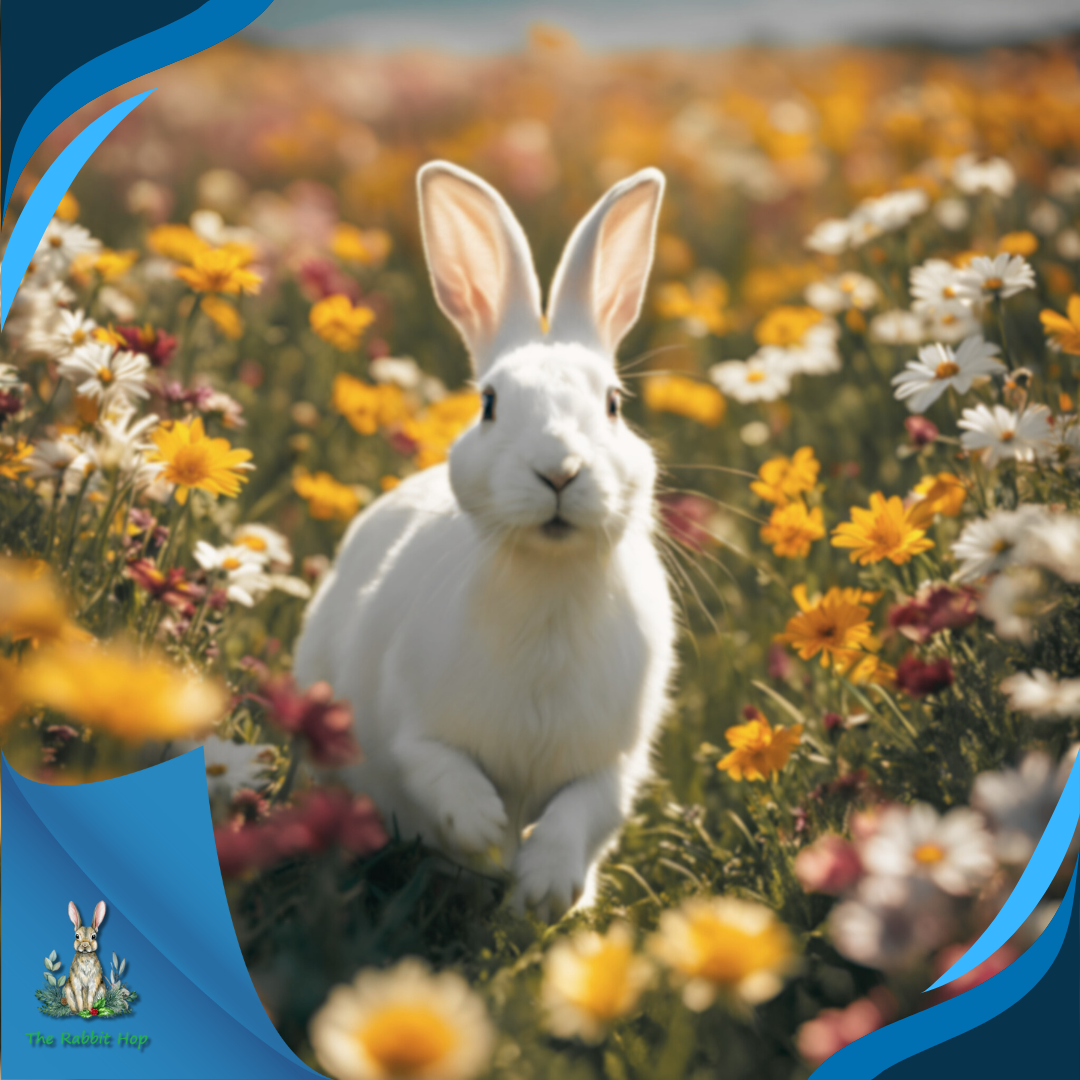
Owning a white rabbit with blue eyes can be a rewarding experience, but it requires a commitment to understanding their specific care needs. From dietary requirements to grooming and health considerations, these rabbits demand attention and care to maintain their well-being. Whether you’re drawn to their ethereal beauty or their unique genetic background, a white rabbit with blue eyes is truly a remarkable companion that adds a touch of magic to any home.
Frequently Asked Questions
How Much Does a Typical Blue-eyed White Rabbit Cost?
Blue-eyed white rabbits can be pricey due to their rarity. Depending on the breed and breeder, you can expect to pay between $50 to $200. Show-quality rabbits may cost even more.
What is the Significance of Blue Eyes in White Rabbits?
The Vienna gene causes blue eyes in white rabbits. This gene creates a unique look that many rabbit enthusiasts find appealing. It’s a genetic trait that doesn’t affect the rabbit’s health or behavior.
Which Cartoon Features a White Bunny With Blue Eyes?
The White Rabbit from Alice in Wonderland is a famous cartoon character with white fur and blue eyes. This bunny is known for always being in a hurry and checking his pocket watch.
Hop into Bunny Fun with Us on Social Media!
Explore our online presence for:
- Bunny Fun: Enjoy adorable videos, discover fascinating facts, and get tips for keeping your bunny happy!
- Top Product Reviews: Find the best products for your fluffy friend.
- Bunny Community: Connect with fellow bunny lovers and share the joy!
Follow us on:

